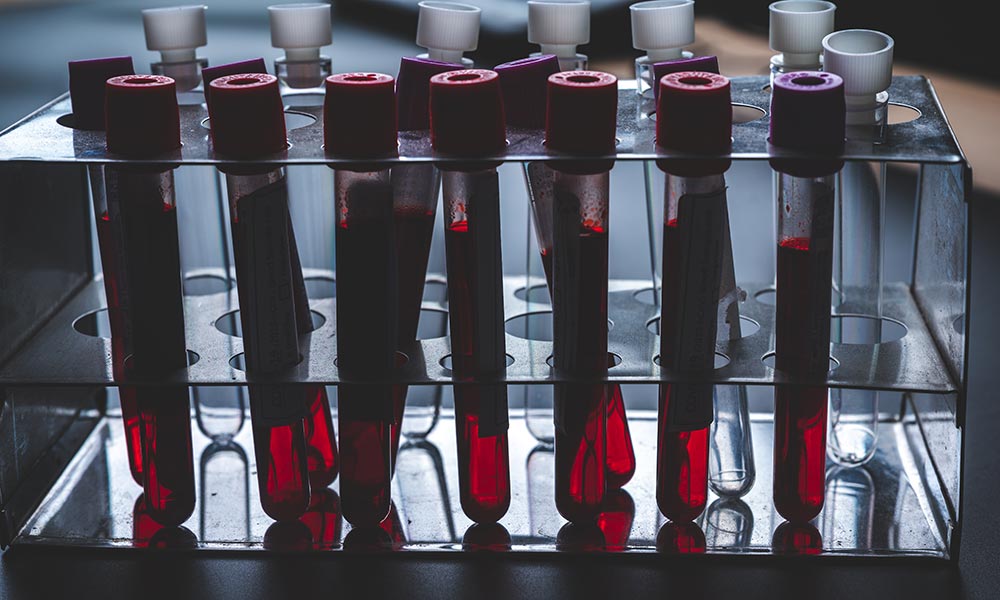Ambien (zolpidem) is short-acting.[1] Its elimination half-life is about 1.5 — 4.5 hours, so the drug’s sedative effects usually wear off within hours. Detection times are longer: zolpidem can be detected in blood or saliva for approximately 24 hours, in urine for roughly 1–4 days, and in hair tests for months. Exact detection depends on the dose, frequency of use, liver and kidney function, and the type of drug test used.
How Does Ambien Work?
Ambien is the brand name for zolpidem, which is a short-acting sleep medicine in the “Z-drug” family, sleep drugs containing zolpidem.[2]
Zolpidem works by boosting the brain’s natural calming signal at GABA-A receptors, which quiets arousal and makes it easier to drift off. [3]
A sedative-hypnotic is simply a medicine that produces drowsiness and promotes sleep; Ambien is available only by prescription and is classified as a Schedule IV medication with a low potential for dependence and abuse.
Immediate-release zolpidem acts quickly, while Ambien CR (extended-release) has a second, slower component intended to help people stay asleep longer.
What Is the Half-Life of Ambien?
Half-life is the time it takes for the body to remove half of a drug dose; it helps predict how long effects and detectable levels last.
For immediate-release zolpidem, the elimination half-life in healthy adults is typically in the range of 1.5 to 4.5 hours, so blood levels fall quickly after a single dose. [4]
Extended-release formulations change how the drug is released over the night but do not dramatically lengthen the timeline for the half-life in healthy adults; people with liver impairment may have much longer half-lives.
Knowing the half-life helps set expectations for how long Ambien’s effects and detection windows may last.
How Long Does Ambien Last and How Long Do Its Effects Persist?
After a standard dose, most people feel the strongest sedative effects for a few hours; subjective sleepiness and impairment generally wear off within the same night.
Immediate-release zolpidem typically causes sleep onset and early-night sedation, while Ambien CR may help reduce middle-of-the-night awakenings due to its two-stage release.
Higher doses, slower metabolism (for example, in older adults), or combining zolpidem with alcohol or other sedatives can prolong impairment and increase next-day drowsiness. Because of this, people should avoid driving or operating machinery until fully alert after taking Ambien.
How Long Does Ambien Stay in Your System? Detection Windows by Test
Ambien’s active drug levels decline relatively quickly, but detection windows vary depending on the test type and individual factors. In blood or saliva, zolpidem is typically detectable for up to 24 hours after a single therapeutic dose.
Urine tests commonly detect zolpidem or its metabolites for about one to four days after use. However, heavy or repeated dosing can lengthen that window, and metabolites may be present longer than the parent drug. [5] Hair testing can reveal past zolpidem exposure for months, making it the longest-lasting detection method.
Overall detection times are affected by dose, frequency of use, formulation (immediate vs extended-release), liver and kidney function, and testing sensitivity.
How Long Is Ambien Detectable in Urine, Blood, Saliva, and Hair?
- Saliva / Blood: Zolpidem and its immediate effects are generally detectable for up to about 24 hours after a single dose.
- Urine: Typical detection is roughly 1–4 days for a single therapeutic dose; frequent or large doses can extend this window. Metabolites (not just parent zolpidem) increase the chances of a positive urine result.
- Hair: Hair-follicle testing can detect zolpidem use for several months after exposure and is primarily used for long-term or forensic screening.
Detection times vary by laboratory methods and the specific assay used, so a negative or positive result depends on both biology and the test chosen.
What Factors Change How Long Ambien Stays in the Body?
The duration for which Ambien remains detectable depends on several factors that influence Ambien metabolism and elimination. Higher doses and more frequent use increase the amount of drug in the body and lengthen the amount of time it can be found.
Formulation matters: immediate-release zolpidem clears faster than Ambien CR (extended-release). [6] Impaired liver or kidney function slows clearance and prolongs the effects and duration of detection. Age and body mass influence metabolic rate—older adults often process zolpidem more slowly. Individual metabolic rate and genetic differences also affect elimination.
Drug interactions with other sedatives or medications that affect liver enzymes can extend detection windows.
Overall, frequency of use and organ function are among the biggest drivers of how long Ambien stays in the system.
Do Liver Or Kidney Problems Affect Ambien Elimination?
Yes. Reduced liver function or impaired kidney function slows the breakdown and removal of zolpidem, which can prolong sedation and increase detection times. [7] Older adults commonly metabolize the drug more slowly for the same reason. People with known liver or kidney problems should inform a healthcare provider before taking Ambien so dosing and monitoring can be adjusted.
What Are Common Side Effects, Withdrawal Symptoms, and Risks With Ambien?
Common side effects of Ambien include sleepiness, dizziness, memory gaps, and next-day slowed reactions that can affect driving or work.[8]
Some people exhibit unusual sleep behaviors, such as sleepwalking, sleep-driving, or making decisions while not fully awake, which can be dangerous.
With regular or high-dose use, stopping Ambien may cause rebound insomnia, anxiety, tremors, and irritability; these withdrawal symptoms usually ease over days to weeks, but can be tougher after long-term use.
Can Ambien Cause Addiction and What Are Treatment Options?
Ambien can lead to dependence, especially when used long-term or at higher-than-prescribed doses. [9] Patients may notice they need more of the drug to get the same effect (tolerance), feel strong cravings, or try and fail to cut down, which are signs that misuse may be developing.
Treatment often begins with outpatient support and counseling and may include a planned, gradual taper under medical supervision to reduce withdrawal.
For people with severe dependence or complicated withdrawal, a short medical detox in a supervised inpatient setting can improve safety.
Ongoing care, like behavioral therapies, outpatient programs, and community support, helps manage cravings and address sleep or mental health issues that contributed to use.
Family support and help connecting with local treatment programs make a big difference for loved ones seeking care.
How Is Ambien Different From Benzodiazepines and Other Z-Drugs?
Ambien (zolpidem) is a short-acting “z-drug” that quiets the brain’s GABA system so people fall asleep. Benzodiazepines work on the same system but differently, tend to last longer, and are more likely to cause dependence and daytime grogginess. [10]
Other z-drugs act like Ambien but vary in how quickly they wear off and how much they affect sleep quality or next-day alertness. Doctors usually pick a sleep medicine based on how long someone needs help sleeping, side effects, and any history of substance use.
When Should a Loved One Seek Medical Help or Detox?
You or a loved one should seek medical attention for severe withdrawal, signs of overdose (extreme drowsiness, slow or shallow breathing), dangerous sleep behaviors (sleep-driving), or inability to stop using despite harm.
If sleep-related activities put the person or others at risk, or if withdrawal symptoms are severe, emergency services or referral for medical detox services may be needed.
Early intervention from medical professionals and local addiction treatment resources enhances safety and improves recovery chances.
Talk With a Medical Professional About Ambien Use
The drug’s duration in the body varies depending on the dose, frequency, and individual health factors. Patients or loved ones concerned about Ambien use should discuss risks and alternatives with a licensed healthcare provider or mental health professional for personalized guidance.














































